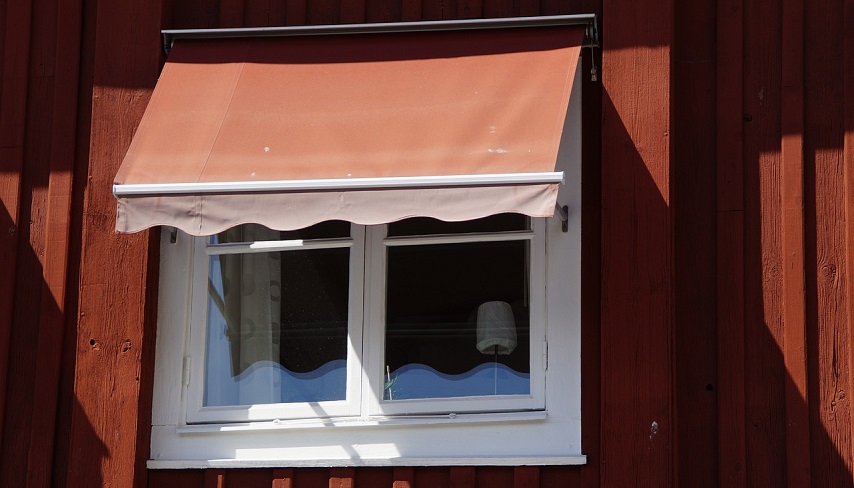Awnings
In the case of awnings, fixed alternately to the facade or to the balcony of the upper floor, it will obviously not be possible to adjust the 360 ° movement as in the case of the umbrella, but otherwise we will only have benefits. They are in fact ideal for sheltering indoor environments from the sun, and this in particular at certain times of the day, where the sun has a very low angle of incidence, which an umbrella will hardly be able to screen. Typical winding systems are of two types: gravity-fed or with extendable arms.

The opening system can be manual or automatic, from here on the difference is made by the fabric: a greater thickness guarantees superior resistance to atmospheric agents. When evaluating hue and pattern, keep in mind that darker-toned colors provide a more powerful barrier to sunlight, but attract more heat.
Drop Awnings
This type is ideal for making the most of outdoor spaces such as lodges or recessed balconies, ensuring adequate protection even from atmospheric agents. This typology is convenient and practical especially in contexts, such as historic centers, where it is necessary to have a minimal impact on the artistic component. Drop awnings generally have an opening and closing mechanism that can be manual, electric (with automated action even from a distance) or spring and can be with arms or with lateral guides.
Swing arm awnings
This type of awning consists of extensible arms with a supporting structure, with rather small dimensions, and the extension mechanism, manual or electric, which allows the opening or closing of the awning. Usually, the extendable arms for outdoor awnings all have an approval for wind resistance; they have differences in the size and type of anchoring (front or ceiling).
